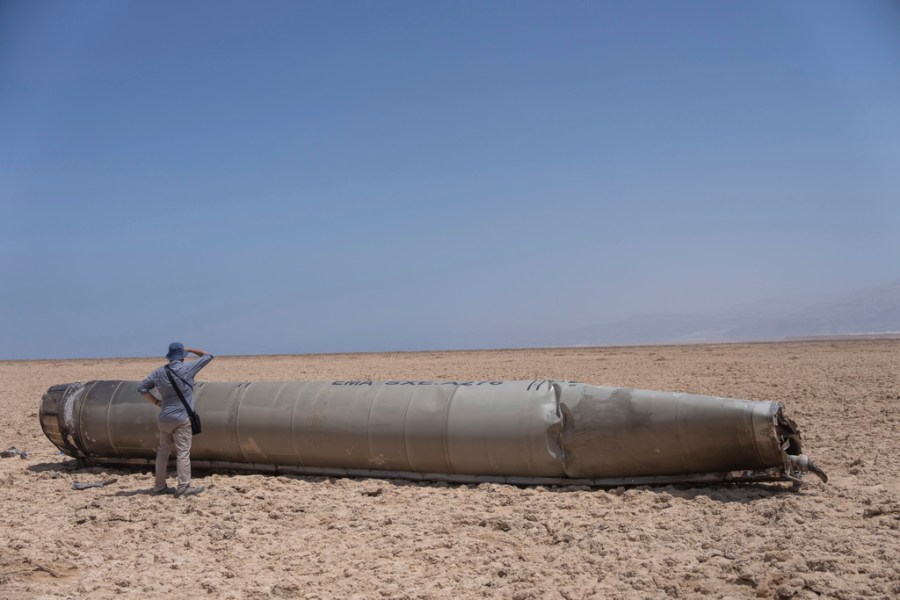
Iran launched two retaliatory strikes against Israel in the wake of the Israeli bombing of the Iranian embassy in Damascus on April 1 and the assassinations of Hamas leader Ismail Haniyeh in Tehran, Hezbollah leader Hassan Nasrallah, and IRGC General Abbas Nilforoushan in Beirut on Sept. 27. The strikes resulted in limited damage and no Israeli casualties, with many of its missiles and drones intercepted by Israeli and allied air defenses. Israeli and U.S. officials have widely celebrated these outcomes as evidence of their superior military capabilities and advanced missile defense systems. U.S. National Security Adviser Jake Sullivan concluded that the Iran retaliation in October as “defeated and ineffective.”
This is an attractive self-congratulatory narrative that plays into entrenched beliefs among some security experts of Western military technological supremacy. However, this interpretation is a dangerous misreading of the situation. My own research on the revenge cycle in international crisis suggests an alternative explanation: Iran’s low impact responses are not a reflection of incapacity, but an intentional escalation management strategy designed to limit damage to Israel and prevent a vengeful escalatory spiral into regional war.
No matter how much Israel and the U.S. attempt to downplay the military significance of Iran’s retaliation, emerging evidence suggests that the second response in October was more successful than initially appeared and suggests Iran possesses the capability to inflict significant damage.
Reports indicate that Iranian missiles hit several IDF targets despite Israel’s layered missile defense systems. Satellite images of the Nevatim Airbase, where the Israel Defense Force’s F-35 fleet is stationed, reveal as many as 30 missile impacts, challenging the narrative of Iran’s military ineffectiveness. And based on U.S. estimates, even before the escalation of regional tensions in October 2023, Tehran already possesses over 3,000 ballistic missiles that can threaten Israel, U.S. assets and oil production in the region, so additional Iranian strikes of similar or greater magnitude remain possible.
A more likely explanation for the limited impact of Iran’s retaliatory strikes is that its leadership is instead engaged in a strategy of intentional escalation management. Iran has utilized both back-channel communications and public messaging to choreograph its retaliation methods and targets. By allowing Israel and its allies to prepare and evacuate, Iran minimizes casualties while still demonstrating its resolve to strike back. This is a retaliatory strategy long used by Iran since the assassination of IRGC General Qasem Soleimani to keep limited conflicts from boiling over.
Second, the significant delays between the Israeli assassinations and Iran’s retaliatory strikes have allowed Israel and its allies ample time to deploy defensive measures. Despite facing domestic pressure to exact swift revenge, the Iranian leadership has chosen to delay its responses rather than follow the domestic political expediency of immediate retaliation. This delay should be interpreted as a costly signal of restraint.
Third, although some political leaders may label Iran’s retaliation as indiscriminate, the evidence suggests otherwise. Iran has deliberately avoided civilian targets, focusing on military installations. This targeting strategy is likely aimed at reducing the Israeli civilian casualties and subsequent public desire for revenge and preventing further escalation.
The domestic sentiment in Iran undeniably compels its leaders to take retaliatory actions, both as a matter of revenge and to support allies within the “axis of resistance.” Tehran is acutely aware that low-casualty outcomes could be perceived as signs of military weakness, especially after its April retaliation. Yet, Iranian leaders continue to employ a consistent strategy of restraint, fully cognizant of the potential for military embarrassment. This willingness to risk appearing weak is itself a costly signal of their intent to de-escalate tensions.
A strategy of restraint only works if both sides are committed escalation control. If Israel and the United States wish to control escalation, a wise course of action would be for Israel to reciprocate Iran’s restraint with proportional responses against military targets, avoiding escalation toward oil fields and nuclear facilities. The U.S. should leverage its influence to persuade its Israeli ally to exercise restraint.
If, however, Israel and its allies consistently respond to Iranian restraint with escalation, Tehran will have no choice but to conclude that Israel and the U.S. attach little value to peace. This could leave Iran with no option but to resort to more drastic deterrent measures, including crossing the threshold of acquiring nuclear capabilities — an outcome well within Iran’s reach and precisely what policymakers in Washington and Tel Aviv are seeking to prevent.
X Zhang is a social science and humanities international security fellow at the Center for International Security and Cooperation at Stanford University.

